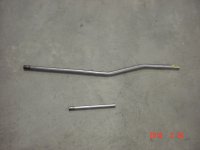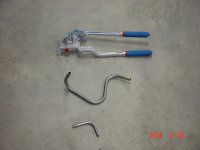mjncad
Super Member
you are a brave man! I am not sure if I could do that!
So what are you plan on making ?
I need to relocate my three rear remotes and power beyond, and there is no room for hoses.
#1 and #3 may work. The face on all look good. I think they all would hold. Keeping the shoulder where the nut seats clean is important so everything sits flat. I have had better luck using silver solder and Sta-silv flux. Clean your parts very well and put flux on the parts and your solder wire. Heat the assembley a dull red and touch the solder wire to the joint and it will suck around just like soldering copper pipe. Being good at copper pipe helps a lot. I think using a small A/O torch works best because it has a cleaner flame.
Dan
I'm good at soldering copper pipe, so I have hopes I can teach myself brazing too.
Here is another option I used on my log splitter. These are 1/2" stainless but you can get them in steel as well. I think they are rated up to 3000 psi and can be found at Parker. They are compression fittings.
Dan
I'll go through my Parker 4300 catalog again, and look at their compression fittings. Thanks for the tip.

